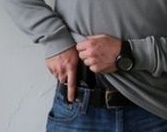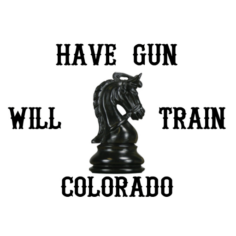Carry a Concealed Weapon
The way I see it here is the real scoop on CCW-carrying a concealed weapon. You will spend some time learning where you can carry a concealed weapon. When you can carry a concealed weapon, and if you can use deadly force in self-defense of yourself and others. You will spend the rest of the time honing your craft. Out of the first three if you can use deadly force in self-defense of yourself and others will be by far the most complicated and toughest to grasp. The where and when you can carry a concealed weapon comes down to state, federal, and sometimes city ordinances (In Colorado north of Castle Rock) and most people can grasp this fairly quickly.
Most concealed carriers get a big break on all this because the odds that you will ever be in a self-defense shooting are slim and none. Many people get away with being sloppy in their knowledge and in the mechanics of handling, carrying, and drawing from the holster. Many times they suffer from not practicing enough to be competent with their chosen pistol.
When you can use deadly force in defense of yourself or others–
Andrew Branca’s new audiobook on the Laws of Self Defense might be just the ticket for some people. This new audiobook is not very expensive and it might be a great time to listen to it. At the bare minimum read Andrew’s book. I always have some copies for sale and you can, of course, buy it on Amazon right here Law of Self Defense
Shooting–
Everyone who carries a gun for self-defense or otherwise needs to learn to be competent with their firearm so that they don’t harm themselves or someone else with improper use. Getting shots on a meaningful target (humanoid type target) in a short period of time is a skill that has to be practiced. You should be able to draw your firearm from concealment and put 2 shots in an appropriate place on a humanoid target in less than 2 seconds at combat distances. If you can not then you probably will not be successful in a self-defense encounter. This is something you need to work on.
Proper Holster-
Holsters come in various configurations and are made from different materials. Kydex and Leather are two of the most popular at the moment. Remember to look at the back of the package your holster comes in. If it lists 20 guns that it fits it’s probably not a proper holster. Holsters have to allow for a full grip on the handgun. Cover the trigger guard and trigger completely. Have natural retention (in other words if you turn the holster with the gun in it upside down will the gun fall out). And not collapse when the gun is drawn. You will most likely buy many holsters in your gun-toting career, always looking for that perfect one.
Carry Positions-
Everyone should start by learning a strong side belt holster. These holsters go on a belt and are worn on your strong side (the hand you shoot with). The reason for this is simple. All the standard procedures (draw stroke) and safety for drawing from the holster are learned in this position. From that position and knowledge of safety, a person can move to another type of draw position and do it safely. Drawing from the strong side belt holster is one of the safest, fastest, and most efficient methods of carrying that there is. IWB OWB AIWB
Draw from the Holster-
Some instructors use the 4 step draw others the 5 step procedure. This is not a learn from a youtube video activity. You need a professional to watch and guide you. Not only to be safe but to fix the things that you will do that you can not see yourself. Remember only 1 in 100 instructors are certified to teach draw from the holster. A person who is certified as a basic pistol instructor with the NRA is not holster qualified. Remember Slow is Smooth, Smooth is Fast.
Tactics-
A common definition of tactics is an action or strategy carefully planned to achieve a specific end. Carrying concealed can be broken down into high profile carry and low profile carry. When carrying in high profile, you might hide the sight of the weapon, but everyone knows you’re carrying one. In low profile carry, the physical features of the firearm are hidden to the deepest concealment. In the latter condition, you are not only trying to conceal the presence of a firearm but the evidence you are carrying it in the first place. Act like you are 007. Play the sound link below
This is a very important part of concealed carry tactics. Blend in Look normal Be comfortable Be prepared and Always carry
